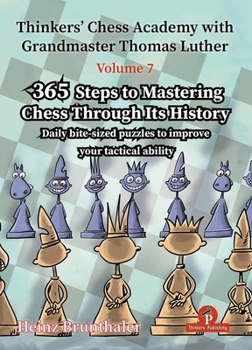Thinkers' Chess Academy with Grandmaster Thomas Luther - Volume 7 by Heinz Brunthaler: 365 Steps to Mastering Chess Through Its History
The age and origin of chess is shrouded in mystery and surrounded by legend. It is thought to have originated in India in the 3rd century AD and reached Persia in the 6th century. The game then came to Europe in the 9th century. At that time, the rules of the game were different from those of today, with the exception of the rook and knight. The queen and bishop, which today are long range pieces, could only make short moves and were barely stronger than pawns.
The build up of games developed very slowly. Because of this, "pre-prepared" positions were used, known as "tabiyas".
The turning point came in the 15th century when the rules were changed to their current form, making the game faster and more dynamic.By today's standards, the games of this time were still quite primitive, with mostly wild attacks.
However, techniques and methods were developed that are still used today, such as combinational motifs.The introduction of printing soon made it possible to publish books on chess and thus pass on the knowledge gained to a broader audience.
Through the whole book we will see examples of composed positions as well as those from games played during all times.Related Subjects
Games




